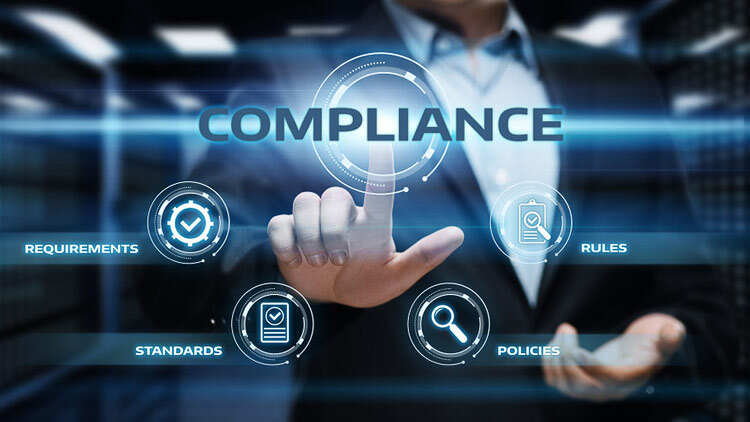
Sustainability is the modern success mantra for business organizations. The best part about it is that it helps businesses achieve their goals without harming the environment. This explains why businesses are keen on investing their resources in the sustainability model these days. It is all the more important for procurement firms. Ensuring sustainability and compliance is of paramount importance for them due to environmental, social, and economic reasons.
Sustainability and compliance in procurement have been under the spotlight, especially after the outbreak of the Covid-19 pandemic. Due to the latter, there has been an exponential rise in both the relevance and significance of the former. At present, experts cite various reasons to advocate the importance of sustainability and compliance. Here are a few of them.
Reasons for the rise in the importance of Procurement Sustainability and Compliance
If the importance of sustainable procurement was on the rise in recent years, it has become indispensable after the Covid-19 pandemic. This has happened due to many reasons, including environmental, social, political, and economic factors. The next generation of defining technologies has also been behind it. Such emerging technologies have prompted most business organizations to promote their legacy procurement infrastructure.
As a spin-off, companies have been able to identify some long-term benefits. These include profitability, top-notch customer service to keep customers satisfied, and business continuity. Here are the reasons that make sustainability and compliance a significant factor for attaining company-specific goals in procurement.
1. Mitigation of risks
Procurement involves several risks. However, companies linked with procurement have the challenge of delivering an excellent business value even as it is surrounded by several risk factors. More importantly, procurement companies need to do it with the availability of limited resources.
To mitigate the risks concerning the procurement process, agile companies are now deploying systems that function on digital technology. These systems can detect different risks and disruptions beforehand. Thereafter, they can send an alert to CPOs to help them in making an in-time arrangement for dealing with the situation in the subsequent stages. Being prepared beforehand helps CPOs in arranging a backup supply stream(s) in advance.
2. Wider supplier diversity
Humane sourcing influences how companies conduct their business. It also culminates in consumer choices these days. Brands that source their products locally and sustainably have wider customer bases than the ones that adopt other approaches. Most customers go with such brands as they feel such brands can deal with the loopholes of compliance and risks in a better way.
The SA8000 and amfori BSCI code of conduct are the two primary examples that explain how the sustainability and compliance model can help boost the confidence of customers by minimizing risks. These systems enable companies to screen suppliers in the best possible manner. This form of screening also boosts the confidence of companies in diversifying their range of suppliers.
3. Higher level of technology-based innovation and collaboration for gaining more suppliers
Aligning goals with suppliers is a major challenge for companies that deal with procurement these days. Sustainability and compliance can help with it by providing a central depository based on cloud technology. It can help make decisions when empowered with augmented intelligence.
At the same time, it also helps accomplish a bunch of other tasks. These include tracking the RoI for senior management, predicting demand with precision, and providing the data linked with the allocation of resources.
4. Transition to a climate-neutral economy
Major Fortune 500 brands like Roche, Unilever, Coca-Cola, Disney, and Tesla have one thing in common. All these companies reap the benefits of opting for sustainable procurement processes. These brands have reported considerable gains in terms of revenue.
Alongside attaining revenue-related goals, these companies have also been able to shape the perception of customers toward these brands. The positive image that these Fortune 500 companies have among customers nowadays is the direct consequence of adopting the sustainable procurement model.
The successful attainment of goals by the aforementioned Fortune 500 companies has made investments in sustainable procurement a hot topic for discussion. In the future, it is likely to gain more traction. It will become a general norm if more and more companies invest in the strategic procurement model in the coming years. This change in the perception of procurement companies will facilitate the transition of the current economy to a climate-neutral economy.
5. Implementation of the smart procurement strategy
For many years, technology has been playing a vital role in the attainment of the long-term goals of procurement companies. Given the current pace of technological growth and the future predictions for the next few years down the line, procurement companies must start training their staff members on the utilization of real-time data and artificial intelligence (AI) for their digital upskilling.
This can help a company minimize the load on its hiring managers to look for new human resources. Handing additional staff members new responsibilities by training them has another advantage. Being a part of the company, they are already aware of the company environment and its work culture. This proves to be helpful for those companies that operate with a smart procurement strategy.
Considerations for companies to adopt a sustainable procurement model
To build a sustainable procurement infrastructure, a company needs to adopt a multi-faceted approach. By adopting such an approach, a company can secure its future with a resilient and durable procurement infrastructure in the long run. The top considerations to have such a model include the following:
- Companies should attach a higher prominence to those suppliers that send supplies based on environment-friendly methods.
- Companies should refrain from renewing contracts with those suppliers who fail to meet the basic safety and health requirements.
- Keeping an eye on supplier lifecycle to mitigate its risks.
- Companies should invest in data-driven AI-based software programs for data tracking, and sharing of real-time data linked with suppliers and their supplies.
Final thoughts
From the above, it stands out that many reasons advocate the inclusion of sustainable compliance in procurement. Keeping them in mind, companies that have already invested in it must continue with it in the future. And those that have not invested in this model should think about doing it for the aforementioned reasons.


